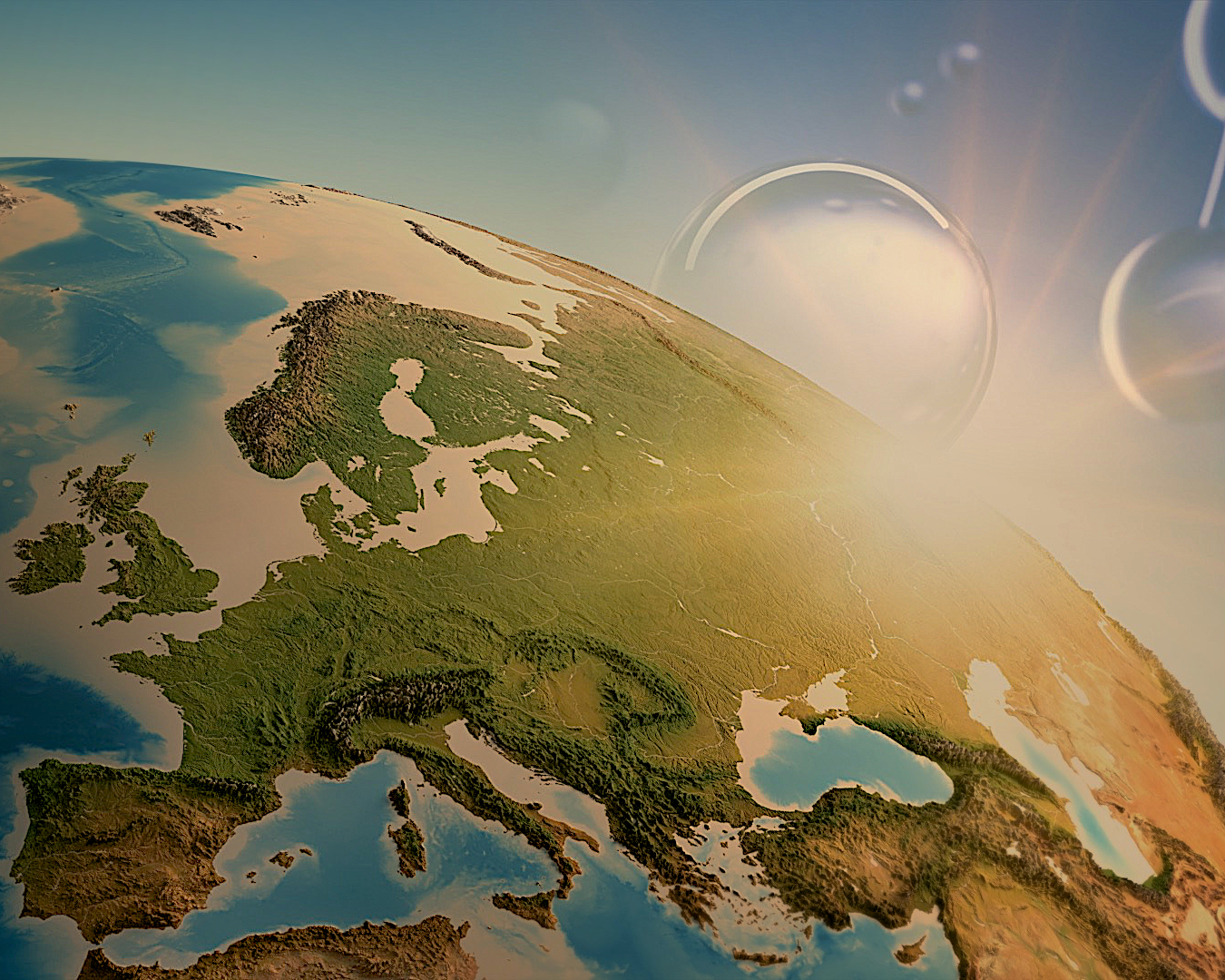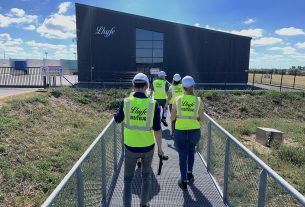Europe – What are the current steps in European industry towards emission-free hydrogen? And how do these fit into the full transformation of industry? Industry & Energy along with four young professionals, will be hitting the road for the HYdrogen Trail Europe (HYTE), June 27th until July 8th. With podcasts, vlogs and journalistic items we will report. Follow us at Industry & Energy and Linkedin. The route becomes clearer and clearer.
During the congress Eemsdeltavisie 2019, a team of young professionals won a scenario competition. The prize was a study trip to Japan. That trip did not happen due to the lock downs. Moreover, Europe has now surpassed Japan in terms of hydrogen plans. Japan was therefore exchanged for a trip through Europe.
HYTE is to visit various locations that will play an important role in Europe’s hydrogen ambitions. Where is hydrogen produced, how is it transported and what are promising applications in industry?
Eemsdelta
The route will start in the Northern Netherlands, where there are already many plans. For example, at Chemie Park Delfzijl. Gasunie and HyCC are developing the Djewels project. The goal in the first phase of the project is to build a 20 MW hydrogen plant that will deliver the first green hydrogen in 2024. Gasunie and HyCC are also working closely with BioMCN, which produces methanol at Chemie Park Delfzijl. BioMCN wants to combine the green hydrogen with CO2 from its process and turn it into e-methanol.
Zuidwending is also worth visiting. HyStock is working there on the first large-scale underground storage of hydrogen in the Netherlands. It is developing a salt cavern for hydrogen storage. If all goes according to plan, the plant with a first cavern will be operational in 2026.
Germany
Numerous projects are underway in Germany, which are currently gaining even more urgency due to current geopolitical conditions. For example, energy company Uniper in Wilhelmshaven has plans to build an import terminal that can convert green ammonia back into hydrogen. At the same location, the energy company also wants to build an electrolysis plant to produce its own green hydrogen with a capacity of up to 1GW. The port offers all the necessary conditions for the establishment of Germany’s first major hydrogen hub. Green hydrogen is a fundamental prerequisite on steel company Salzgitter’s path to Salcos – Salzgitter Low CO2-Steelmaking. A project in which Uniper in Wilhelmshaven can play an important role.
Also in the Ruhr area the first steps are being taken towards emission-free hydrogen. A 10 megawatt electrolyzer is currently operational at Shell’s Energy and Chemicals Park Rheinland. There are plans to expand the capacity of the electrolyzer to 100 megawatts at the Rheinland site, near Cologne, where Shell also plans to produce sustainable jet fuel (SAF) from renewable energy and biomass in the future.
Turquoise
A few hundred kilometers away, BASF’s Verbund site, together with RWE, has big plans in the field of electrification and hydrogen. Hydrogen in particular seems to be an interesting route for BASF. Hydrogen can be produced via methane pyrolysis with carbon and not CO2 as a residual product, the so-called turquoise route. The first pilot is currently being built. BASF’s partners include ThyssenKrupp and Linde. TNO is also doing research on this turquoise route.
Switzerland
For two years Hydrospider has been running a 2 megawatt green hydrogen plant in the Swiss Alps. The power comes from the Alpiq Gösgen hydroelectric plant, which is more than 100 years old. Hydrospider, a joint venture between H2 Energy, Alpiq and Linde Gas (PanGas) is committed to more sustainable, emission-free heavy freight transport in Switzerland. Together with Hyundai Hydrogen Mobility and the H2 Mobility Switzerland Association, the joint venture is currently establishing a hydrogen ecosystem for emission-free mobility.
Spain
Countries on the Mediterranean Sea have the advantage of abundant sunshine. In the south of Spain and Portugal, the price per kilowatt-hour of solar electricity generated is heading towards 1 eurocent. This also has a positive effect on the cost price of green hydrogen. It visibly stimulates the possibilities. For example, fertilizer producer Fertiberia, in cooperation with energy company Iberdrola, inaugurated the largest green hydrogen and green ammonia plant for industrial use in Europe in mid-May. This makes Fertiberia the first company in the world to produce green ammonia and CO2-free fertilizer on an industrial scale.
France
On the west coast of France, Lhyfe has built its first hydrogen production unit, operational since summer 2021. The green hydrogen company connects four wind turbines directly to an electrolyzer that uses salt seawater to make hydrogen.
September 2022 is scheduled to see the opening of the world’s first hydrogen pilot production facility at sea. Lhyfe will then place an electrolyzer on a floating platform about 26 – 30 kilometers from Saint-Nazaire, in the Atlantic Ocean. Connected directly to a floating wind turbine from Vestas.
Belgium
The Port of Antwerp is a bit more cautious in announcing large hydrogen projects. That does not mean that they are not being developed. A major player in northwest Europe is Air Liquide. The producer of industrial gases has decades of experience with the production and transport of hydrogen. For example, it already has its own hydrogen infrastructure in the Benelux and northern France for its industrial customers. Various hydrogen plants in Antwerp and Rotterdam, among other places, are connected to this. These include the new hydrogen plant on the Covestro site. This is still based on steam reforming, but uses five percent natural gas through an innovative process and also emits less CO2.
Southern Netherlands
The supplier of industrial gases is also looking further into the future. In Normandy and also in Zeeuws-Vlaanderen, the company has plans to build green hydrogen plants. In Terneuzen, for example, it wants to build a 200 MW electrolysis plant. The project, called Elygator, cleverly integrates two different electrolysis technologies (PEM and alkaline) into one design.
Rotterdam
In preparation for the Trail, the team already paid visits to the port of Rotterdam. At the Maasvlakte, the Port of Rotterdam is building a special conversion park for electrolysis companies. The construction of a 250 MW electrolyser from BP and HyCC and a 200 MW electrolyzer from Shell are planned here, alongside other electrolyzer projects. It is expected to be operational by 2025. At this special business park, wind energy from the North Sea will be used to make hydrogen.
Uniper also has plans for a green hydrogen plant. From the roof of the Uniper power plant, we can see the spot where this will all happen. Check out the first vlog we shot there! From that view you can also see where Gasunie, Vopak are going to build their ammonia import terminal. And towards the east, from the roof, it is possible, with a little imagination, to imagine the route of the hydrogen pipeline to industry, including Shell in Pernis.
What?
Hydrogen Trail Europe
When?
June 27-July 8, 2022
– 27 June start with an online Talkshow (10:00-11.30) from Entrance in Groningen
– 28-30 June Various stops in Germany
– July 1 Switzerland
– July 4 and 5 Spain
– July 6-7 France
– July 8 Belgium/Southern Netherlands
Who?
– Tes Apeldoorn, Process Engineer Neste
– Carina Nieuwenweg, PhD Wageningen University & Research
– Lucy Schwartz, Project Manager Hydrogen Uniper
– Leon Rosseau, PhD Eindhoven University of Technology
– Wim Raaijen, Founder/Chief Executive Officer Industry & Energy
How?
With electric transport and, where possible, with a hydrogen-powered car.





